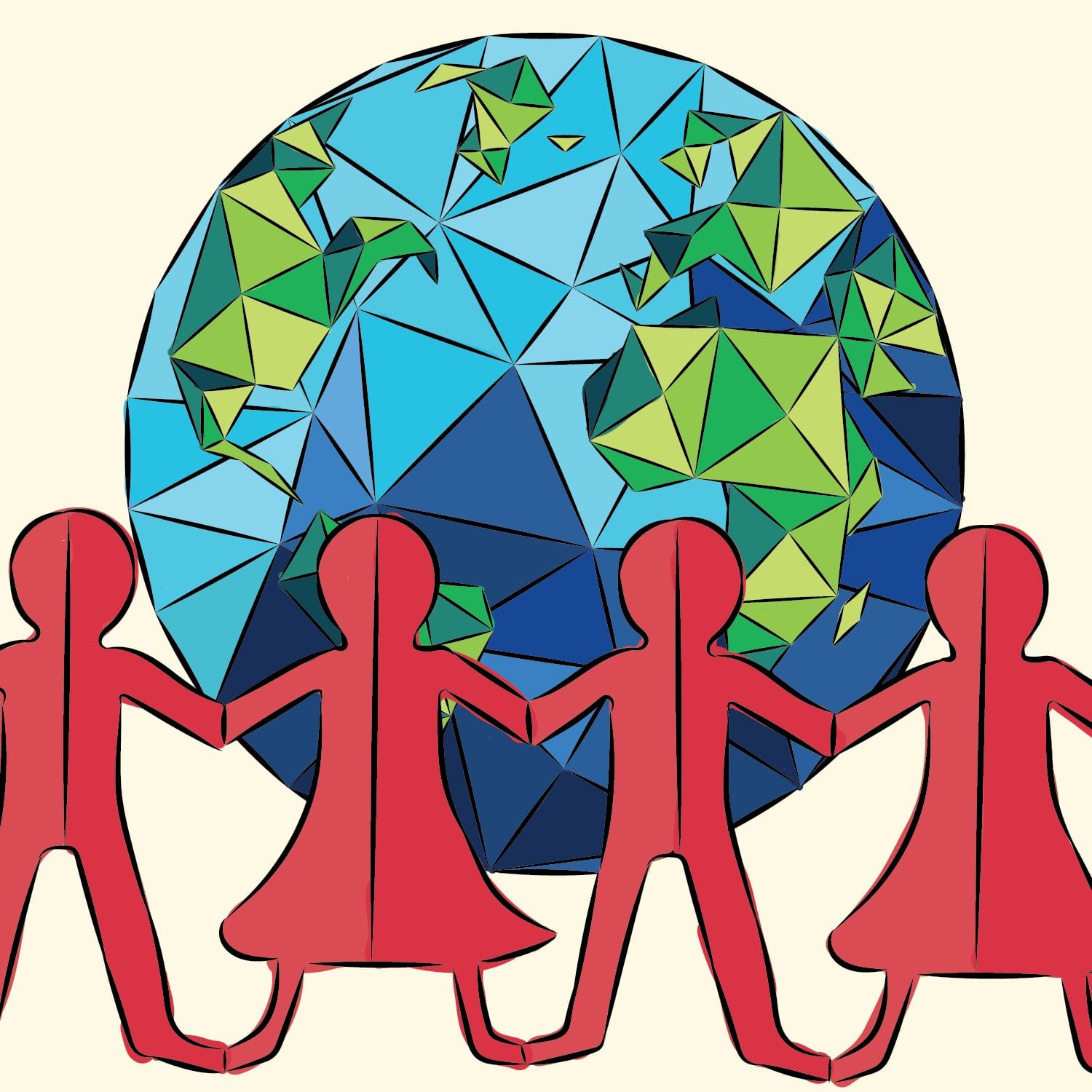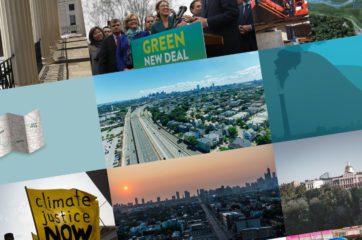BY MARIA VIRGINIA OLANO, MAY 10th, 2018
This week, our podcast, Cooler Earth, focuses on building resilience and social capital in the face of climate change. Be sure to catch the episode airing Thursday 5/10, and in the meantime, here is some of what we learned:
Resilience has become somewhat of a buzzword in policy and academic realms. Broadly defined as a system’s ability to cope with shocks in a way that protects its functions and identity, ‘resilience’ is something we are all trying to work towards. In a time when extreme weather dominates our news streams, it is important that we understand the factors that make us more resilient and meaningfully invest in them.
After graduating from college, I knew I wanted to work on improving the safety and security of communities. That challenge turned out to be somewhat overwhelming. There are simply too many threats and too many unknowns in determining what will make us vulnerable in the future. Climate change is certainly a big part of that uncertainty –– from floods, food security, the spread of disease, extreme weather,we face a wide array of very tough challenges. I became fascinated with the idea that we can improve a community’s ability to cope with current and future threats in a way that avoids worse case scenarios and saves lives, which is why I’m pursuing a masters degree in ‘Resilience Studies’.
When we think about security, we tend to gravitate towards engineering or technological solutions –– big projects that we believe will make us safer in the face of climate change. What I found over the past year, however, was a very welcome surprise; it turns out that building resilience comes largely from strengthening a community’s internal abilities to overcome challenges, while working towards bridging the gaps that divide our societies.
Data from around the world supports the conclusion that building social, rather than physical infrastructure holds the key to resilience –– whether that be from extreme weather, terrorism, or any other type of shock.
While it may seem like an elusive, almost imaginary concept, it turns out that social capital is not only real, but it is a quantifiable resource that has been proven to save lives in times of disaster and create communities better able to recover after a disturbance.
Social capital can be defined as the ties and networks that we have as individuals and as communities. Those connections to friends, family, and neighbors allow us to access resources or help when necessary. We rely largely on our social ties and networks in our daily lives, but in times of disaster those connections have proven to be crucial. Communities all around the world have crafted civic responses in times of disaster. The pictures that aired on the news after Hurricane Harvey, of people in Houston using their boats to rescue those who were stuck in flooded homes, is an example of such responses.
People and communities with greater social ties are therefore more likely to survive climate-related events, as well as return to the flooded or damaged areas after a disaster—thereby accelerating the recovery process. Individuals or families with strong ties can draw on ‘informal insurance’ networks to acquire critical resources such as food, water and assistance with childcare, when formal systems may be out of service.
The Good News
Data supports the conclusion that social capital is a critical component of resilience, which carries significant implications as to how we think through policy and budget decisions. The good news is that investing in people and communities is a lot cheaper than building massive seawalls or levees –– which will also most likely not be enough to protect our cities. Investing in social capital also means bridging some of the social inequities that plague our communities and remedying racial and social justice issues, too. We can therefore become more resilient and better prepared to deal with future threats while at the same time tackling the issues we currently face.
There are examples from around the world about communities that understand this concept and have begun working towards it. San Francisco, for instance, faces the immense threat of an overdue earthquake. Officials in the city not only understand this, but also value this idea of fostering social capital, and they have begun actively working towards building it. One thing the city is doing is funding ‘neighborfests’ around the city. The idea is simple: neighborhoods get some cash from the city in order to host a party, and the only conditions are that the whole community needs to be invited and there must be a table with information about disaster response.
Another example comes from the town of Lyttleton in New Zealand, which is implementing a timebaking program. Timebaking is a way of trading skills in a community, and instead of dollars, time credits are used as payment. Residents earn time credits for the work they do, and then use them to ‘buy’ another member’s time to get the services they need. This simple idea serves to build trust and relationships in the community, meaning in the event of a disaster, residents are better able to assist each other and work with the authorities to respond.
A way in which CABA is working toward community resilience here in Boston is through our annual Businesses Against Rising Seas (BARS) campaigns. The campaign this year aims to work with local businesses in Massachusetts’ coastal communities to begin a conversation about local climate resilience and gather data on businesses’ preparedness for flooding and other climate threats.
The not so good news
While this concept makes sense and in a way resonates at a very local level, it is difficult to convince higher-level politicians and more established disaster response organizations to shift their focus from a more traditional technological or engineering approach to resilience. Politicians largely focus on ‘hard’ solutions to threats, things they can physically point out and have as proof of a job well done. All the talk about building walls and dams is a great example of this. But there are other systemic social issues that must be addressed in order to foster social capital. Racism, inequality, distrust of law enforcement all erode social capital and make us all worse off.
As we stand in the crux of growing threats, and massive uncertainty as to what those are going to look like in the future, we have an opportunity to rethink our approach to security and resilience. We have a chance to invest in our communities and mend the relationships that have historically been challenging. Not only because it is right, but because it is crucial to our collective wellbeing and our ability to adapt and survive what’s coming.
If you are interested in this topic and want to learn more, tune in to our podcast Cooler Earth. We sat down with a leading expert on social capital and disaster recovery to talk through what social capital means and what it looks like in practice. You can listen to our podcast on iTunes, Google Play, Soundcloud, Spotify and directly on our website! New episodes air every Thursday.









